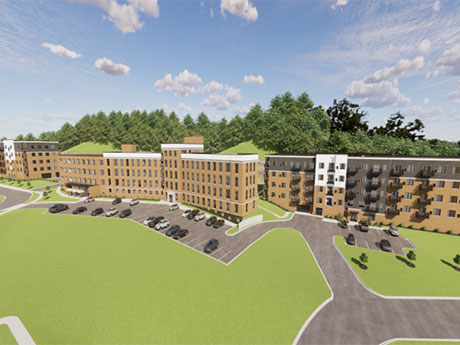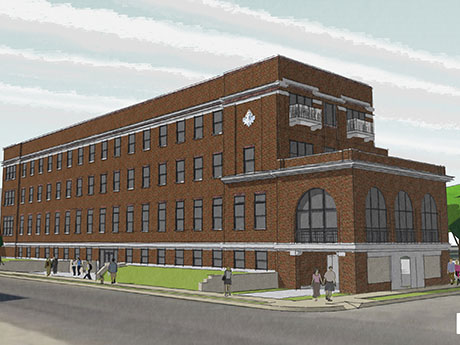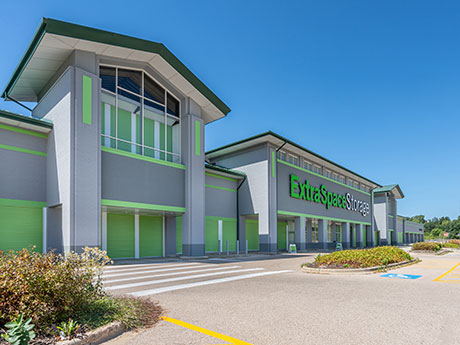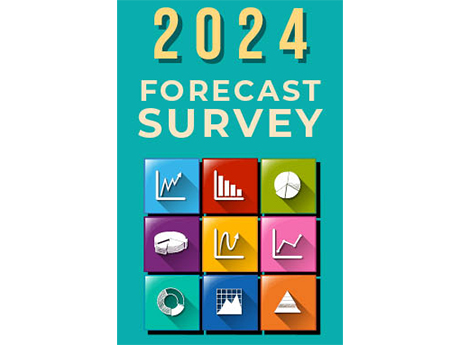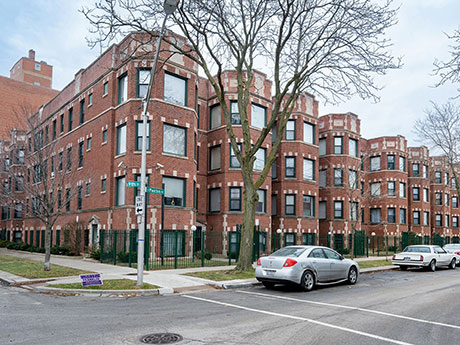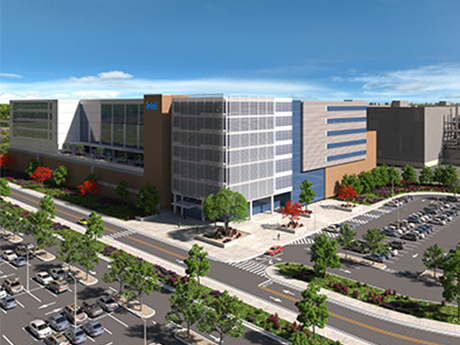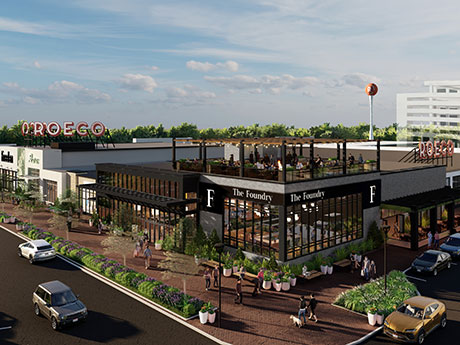Property Assessed Clean Energy (PACE) is a financing tool that provides long-term, low-cost construction financing for new and existing buildings. Some of the eligible improvements include energy efficiency, water efficiency, renewable energy and resiliency measures such as seismic and stormwater measures. For commercial real estate properties, the acronym is listed as C-PACE. Rafi Golberstein, CEO of Minneapolis-based PACE Loan Group, says there are many reasons why developers like PACE financing today, but the most important is the cheaper cost of capital. REBusinessOnline spoke with Golberstein to learn more about the financing tool and its benefits. REBusinessOnline: What is driving momentum for PACE financing? Rafi Golberstein: PACE is effectively solving a hole in the capital stack. In today’s market when banks and mortgage lenders have tightened up significantly, typically lending less and providing less leverage, that creates a pretty large equity check requirement that is significantly larger than it was two years ago. PACE is coming in to help alleviate some of that pressure to allow these projects to still move forward. In some cases, we’re actually cheaper than the banks. For the developer, it makes a lot of sense to use PACE. There are other structural reasons as well. Bank …
Heartland Feature Archive
With office occupancy still well below pre-pandemic levels due to the prevalence of the hybrid work model and companies downsizing their space needs, property owners are resorting to creative solutions for vacant or underutilized buildings. The conversion of office properties into new uses such as multifamily or hospitality is one approach. While these adaptive reuse projects are not for the faint of heart, they are an important way to avoid demolition. Construction debris from demolition projects contributes to the building industry’s huge carbon footprint, states Alan Barker, principal and residential market leader at Chicago-based architecture firm Lamar Johnson Collaborative (LJC). When considering an office conversion project, the first step is to make sure that the building’s structural integrity can safely accommodate renovations. Beyond that, office buildings that are a good fit for adaptive reuse typically have flexible floor plans, access to light and ventilation, existing utilities that can handle changes in capacity, and a location that offers proximity to amenities, transportation and parking, according to Barker. Recently, LJC created an adaptive reuse scorecard to help developers and building owners assess a property’s potential for a conversion project. The scorecard is comprised of seven categories: development potential; building form; building systems; …
Nearly one-fifth of Americans rent self-storage space, according to a recent study conducted by StorageCafe, an online platform that provides storage unit listings across the nation. Owners and operators of the property type are keen to capitalize on the strong demand. According to StorageCafe, the total amount of new storage space delivered in 2023 reached 49 million square feet, up 15.6 percent from the prior year. The national average rate for a standard 10-by-10-foot, non-climate-controlled unit is currently around $122 per month. The primary demand drivers for self-storage are what the industry refers to as the four D’s — death, divorce, dislocation and downsizing. But there are additional factors at play. Matt Clark, director of operations for Skokie, Illinois-based StorSafe Self Storage, cites remote work and flexible lifestyles; decluttering and minimalism; and urbanization. “With the rise of remote work, individuals seek storage solutions for work-related equipment and belongings, while those with flexible lifestyles require storage for items not needed during travels or temporary stays,” he says. “Minimalism prompts individuals to seek storage for sentimental items or occasional-use belongings. Urban dwellers in compact spaces require storage for seasonal items or bulky furniture that doesn’t fit in their homes.” David Perlleshi, a …
FeaturesHeartland Feature ArchiveMultifamily & Affordable Housing Feature ArchiveNortheast Feature ArchiveSoutheast Feature ArchiveTexas & Oklahoma Feature ArchiveWestern Feature Archive
Forecast Survey: What’s Your Take on Commercial Real Estate in 2024?
by John Nelson
The editors of REBusinessOnline.com are conducting a brief online survey to gauge market conditions in 2024, and we welcome your participation. The survey should only take a few minutes to complete. Questions range from property sectors that you are most bullish on heading into 2024 to trends in deal volume to your outlook for interest rates. The results of our 13th annual survey will be compiled and published in the January issues of our regional magazines. Conducting these surveys is part of our mission at France Media to provide readers with indispensable information, and we couldn’t do it without your help. To participate in our broker/agent survey, click here. To participate in our developer/owner/manager survey, click here. To participate in our lender/financial intermediary survey, click here. (Note: Please remember to click on “done” to properly submit the survey.)
By Harrison Pinkus, Interra Realty Though many multifamily investors have been able to close transactions in today’s less-than-ideal economic climate, high interest rates remain a challenge for some. However, there is one strategy that can propel a deal over the hurdle of high interest rates and across the finish line: assuming the seller’s loan. With plenty of investors looking to acquire assets despite elevated rates, loan assumptions offer a win-win opportunity, as long as the buyer and seller surround themselves with a knowledgeable team of brokers, attorneys and lenders. The biggest advantage for buyers is a lower financing rate than what is currently available on the market. Buyers also benefit from lower closing costs and no appraisal. Meanwhile, loan assumptions at a lower rate provide sellers with the leverage to command a higher asking price for their property. Loan assumptions are by no means the only route to closing a deal in today’s environment. After all, investors can always move ahead with a purchase now and finance at current rates with a plan to refinance later if rates improve. But, since the buyer must be able to acquire debt financing and carry a higher rate for a year or more …
By MaCauley Studdard In the last two-plus years, rent growth and net absorption have both reached new heights, fueled by record levels of demand as a result of surging e-commerce sales. While e-commerce sales growth and the ongoing operational trend of maintaining higher inventory volumes has provided a tailwind to industrial fundamentals, there is also a third critically important component of demand growth that could continue to have an outsized influence on the industrial market in the months and years ahead: onshoring supply chain operations. Understanding the broader dynamics behind the onshoring trend is important to accurately measure its influence on the industrial market. Slowing trade growth The rapid pace of growth in global trade has been one of the most significant economic trends of the last half century: the defining characteristic of modern economies. The percentage of the world’s economy attributed to international trade nearly doubled between 1973 and 2008, growing from approximately 30 percent to 59 percent. While international trade remains the single most influential factor in the global economy, that figure has remained somewhat static in the last 15 years. Several factors have contributed to slowing global trade growth, including: • Growing demand for skilled labor • …
By Jerome Wallach, The Wallach Law Firm Owners of large commercial real estate portfolios typically have internal staff to deal with assessed property values and the resultant taxes on a regular basis. But what about owners of small- or medium-value properties? How can a taxpayer, without knowledgeable staff or outside assistance, determine whether their assessment is fair or if they should seek an adjustment? And if seeking a reduction seems appropriate, going it alone through discussion with the assessor may be productive. Any such informal review or discussion should be the result of careful consideration and preparation. The following points are essential in that review and will help the taxpayer build and present a strong case for a reduced valuation. Getting started A government representative, usually the county collector, issues a property tax bill based on the value the county assessor has placed on the taxpayer’s real estate. The property owner may launch an appeal to contest that assessed value. However, in many states, the tax bill arrives after the due date for appealing the assessor’s valuation. Owners should review their property’s assessed value each year. Begin the process as soon as the assessor posts new values to its website, …
By Timothy Rye, Larkin Hoffman A recent Minnesota Supreme Court ruling requires tax assessors to exclude an airport’s concession fees from rent-based valuations for property tax purposes. The case offers a flight plan to lower taxes at many of the nation’s transportation hubs and underscores the importance for all taxpayers to exclude business value from taxable property value. Every major airfield collects fees from food-and-beverage providers, retailers, banks and other businesses that provide goods or services on airport property. Concessionaires, or those who pay the concession fees to the property owner, commonly pay these charges in addition to rent owed for the real estate where they operate. Many of these businesses are also responsible for property tax that passes through to tenants in a commercial lease. The cases leading up to the March 29 state Supreme Court decision involved two car rental companies that challenged their 2019 tax assessments, claiming the assessor’s office had overstated their property values by including concession fees in its income-based valuation. High-Flying Fees Both Enterprise Leasing Co. of Minnesota and Avis Budget Car Rental pay a concession fee equal to 10 percent of gross revenues in addition to real estate rent for their operations at …
The future of retail has been questioned many times in the last few years, but the sector continues to evolve and overcome any obstacles that arise. Today’s consumers want a gathering place to dine, drink and be entertained, especially after the isolation and stay-at-home mandates they endured throughout the pandemic. With that in mind, owners are redeveloping many underutilized retail properties into new concepts that invigorate the towns in which they reside. Take ROECO, for example, a project that aims to transform a former Sears Roebuck location in Lansing, Michigan, into a retail and entertainment destination. Owner Gillespie Group purchased the property about 10 years ago when Sears was still operating. Sears opened the property in 1953 and vacated it about four years ago. Most recently, a local hospital utilized the site for COVID-19 testing. Pat Gillespie, CEO of Lansing-based Gillespie Group, says his firm is actively marketing the project and has about seven to eight letters of intent with retailers. Gillespie’s main focus is retail and entertainment, but the firm is having conversations about hospitality or housing for the far northeast corner of the 14-acre property. Gillespie says the design of ROECO will have a retro feel to play …
Multifamily transaction activity slowed in the second half of 2022 and continues to remain muted due to pricing uncertainty. U.S. multifamily sales totaled $187 billion in 2022, down 16.1 percent from $222.9 billion in 2021, according to Yardi Matrix. The Federal Reserve has raised its key short-term rate, the federal funds rate, nine times over the past year for a total of 475 basis points in an aggressive move to fight inflation. The Fed’s actions have led to a sharp rise in commercial mortgage rates, which have a significant impact on pricing, states Yardi Matrix. The 10-year Treasury yield, the benchmark for permanent, long-term financing, is now hovering around 3.5 percent, up from 2.3 percent one year ago. “In the current climate with inflation and rising interest rates, we’re a bit more cautious, but no less active in scouring the market for great investments,” says Tim Donovan, director of investments for Midloch Investment Partners. “Investment sales are happening in this market, including by us, but it’s generally taking longer for buyers and sellers to agree on a price, and for buyers to raise the equity required to meet lender terms for permanent financing.” In January, the Consumer Price Index rose …


